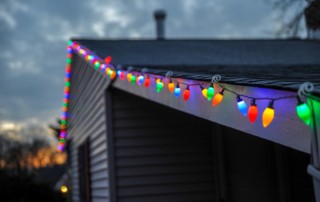Roofing materials, properly installed and maintained, last for decades. Asphalt shingles roofs installed 20 years ago are just starting to come to their end of life usefulness; and clay tile roofs likely offer an additional 10-15 years over their shingle counterparts.
Still, every roof will eventually need replacing. If you are facing a re-roofing project and are wondering about how to even begin, you need some basic information – and a working knowledge of what to expect.
How to Know You Need Re-Roofing
A yearly roof inspection will help you to understand the condition of your roof and if it is nearing its end of life. Often, people learn they need a new roof once it starts leaking, but it is never advisable to wait until that happens. A leaking roof can cause damage in your attic, to interior walls and windows, and be conducive to mold growing in hidden places. If you are buying or selling a home, the roof inspector will be able to ascertain if the roof has less than 3 years left on its utility – in which case the roof will need to be replaced in order to obtain insurance coverage.
Steps to Re-Roofing Your Home
Once you have determined that you need a new roof, you’ll need to find a licensed, insured Venice roofing contractor. (Read here as to why this is important.)
You will work with the roofing company to choose the right materials for your new roof – asphalt shingle, clay tile or metal are the most popular Florida roofing materials. Your choice will depend upon your budget, your personal style, and may also be regulated by community or HOA restrictions.
Here are the physical steps of re-roofing:
- Removal of Old Roofing Materials: We will need to remove all old shingles or tiles and underlayment, revealing the wooden deck and sheathing underneath. This is necessary to ensure that the wooden sheathing can be properly inspected for integrity. If sections of the wood decking or sheathing is damaged, rotted, or cracked, they should also be replaced.
- Layering Shingle: You can safely place a second layer of shingle on an old layer, and this method can save you hundreds (if not thousands) of dollars. However, you will not be able to inspect the condition of the underlayment, decking or sheathing, so you may run the risk of covering over a damaged structure.
- Drip Edge / Water Shield Installation – After wood decking is prepared and structurally sound, a piece of metal bent at 90 degrees is installed at all edges of the roof. This “drip edge” prevents rain from getting underneath roofing material on all edges. A water shield may also be applied to the wood decking, at the bottom of the roof and at all roof penetrations.
- Roof Felt Installation: Roofing felt (roofing felt paper) is then applied as an underlayment before shingles or tiles are added, in order to prevent moisture from leaking into a roof. The standard types of felt are #15 and the more waterproof #30.
- Roofing Material Installation: After the prior steps are finished, the new roofing material can be installed. Materials are laid down working from the bottom up, followed by flashing, ridge vents, and ridge capping installation, as needed.
- Sealants or Coatings: Ask your professional Venice roofer if a UV sealant or waterproof coating will help to extend the life of your new roof, by protecting it from the harsh sun and rain our climate produces.
Kingdom Roofing is a local, family owned roofing company, serving Venice for nearly 20 years. We are here to answer any questions you may have regarding re-roofing your home.




